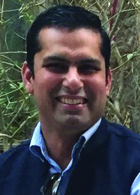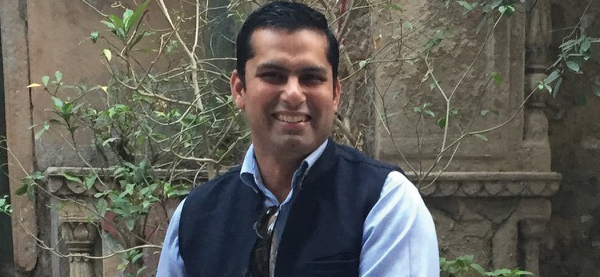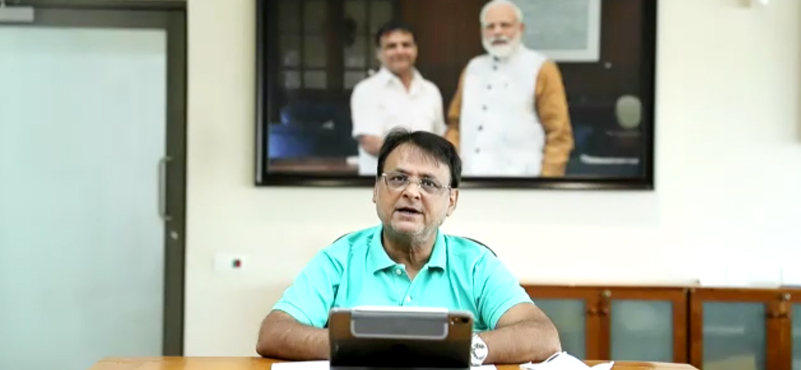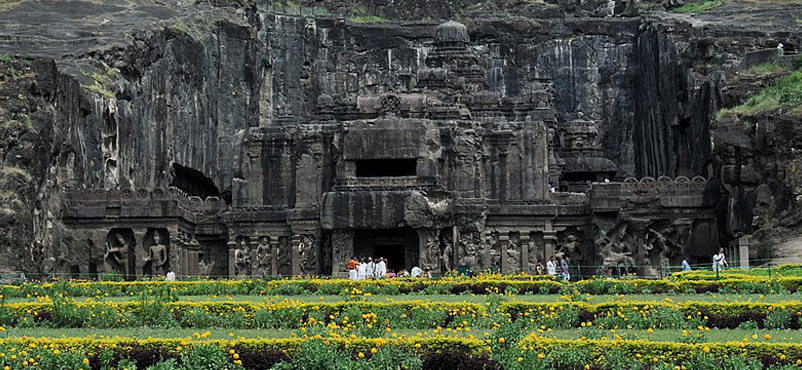India’s diverse heritage, perhaps, does not receives the adulation by communities and travellers as it ought to have. An important reason for this shortfall is the absence of story-telling in pitching a product for tourists, feels Sachin Bansal, Chief Explorer, India City Walks. His guided tours to bylanes of India’s old cities, with skilled guides and customised rickshaws in offering, are helping travellers and communities visit heritage in a refreshingly new light.
 How did this idea come about? Heritage tour in Old-Delhi as a concept.
How did this idea come about? Heritage tour in Old-Delhi as a concept.
I come with 18 years of international experience, having worked with major MNCs world over. I always thought India had so many stories, and when people visited India, they used to ask me about possible activities to engage into. I thought that we did not have story-telling activities here in India. Although we do have big festivals now, but there is a dearth of activities which connects to masses. So, we started the concept of ‘Delhi Walks’ in 2010 which was my pilot project to showcase Delhi to larger audiences. And then in 2012, we started with ‘India City Walks’ across cities and in past years we have won many accolades, and introduced many products. We do focus on art, heritage, architecture and food. We do not come in as a full-fledged tour company. We want to plug ourselves with big companies so that they have more interesting activities and engagements to offer to their clientele. We attend to FITs, individuals, CSR, NGOs and school and college going students. That aside, we also encourage heritage preservation. We have campaigns like ‘My Heritage My Neighbourhood’ which runs with government institutions like Delhi Tourism.
What are some other cities, apart from Delhi, in which you have ventured post 2010?
We have started tours in Agra and Jaipur which is the ‘Golden Triangle’ for us. We work in Lucknow and Aurangabad. We have roped in a bit of Mumbai in an experiential way. We took our time to create products and pilot them. Now we just need to replicate it. Importantly, we also need to develop skills to understand heritage. We simply do not have the skills to understand what heritage is. Also, as a company, we are not tour-operators and want to maintain that distinction.
But there is a thin-line between being a tour-operator and conserving heritage, when you are also in a commercial activity aimed at catering to tourists. Please elaborate.
You distinguish between the two by curating an experience that plugs in to a particular itinerary, and doing the whole itinerary. If some tourists want to undertake a Rickshaw tour, although anybody can do it, we have developed our own customised Rikshaws, travelling on which is an experience in itself.
What is so special about it? How do you create a unique experience?
You have to be a part of the guided tour to experience it first-hand. It is difficult to describe it in words. The effort that has gone in creating skilled drivers and the experience of cruising the by-lanes of Old-Delhi in a customized Rickshaw has its own charm. In my opinion, luxury and experience are misused words in India. Plain talk about ‘experience’ is not right, unless one is offered to the traveller. So that is where you draw the line as we are not a packaged tour.
How is your outreach happening? You must have roped in hotels in your endeavour. Take us through that.
I have had plenty of experience in working in different set of international corporations. Outreach is something we play on. Much of it stems out of personal engagement, and training people and talking to them. It is all about becoming a visiting faculty and talking about it. Word has to go up. Social media is one aspect, but again, as I said, experience and tours are two different perspectives. And when I say larger itinerary, first-time travellers to India who put up in a hotel are communicated through integration with hotels. We are integrated with travel agents, too.
So, are your primary clientele a high-spending tourists. Are you roping in only five star and branded properties?
No. We have walks that cost `300, too. And it goes up to `10,000. The difference in pricing varies majorly on inclusions and exclusions of facilities during the selected itinerary. It is purely based on the quantum of service that a consumer wants. If someone needs a car with the package, the cost goes up accordingly.
We also closely work with Delhi Tourism and have several itineraries for masses. There are customised itineraries that we curate, depending on preferences of customers.
Tell us a little bit about your consumer profile. Are most of your clientele foreign visitors?
I differ from the idea, now. I also thought so when I started with this. Now, I think sixty percent of my clientele are residents and domestic travellers. Also inter-state travellers who are coming in with special interests, ideas and plans. We have overcome the challenge of showcasing a Delhi resident his city from our eyes.
It is visible that you have been very picky in choosing destinations. You are working in Lucknow, Aurangabad and, of course, in Delhi. From an industry perspective, would not this venture be a great asset, to say, the Northeast?
I am very keen on Northeast and have already developed requisite products. My major problem coming over there is that the local youth do not want to live there. This is my personal experience. This argument has nothing to do with socio-economic-cultural perspective. I want to create an aspiration out there. I would be glad to take my plans forward, provided we are in possession of requisite funds. And that is why I said that there is a lot of skill management that needs to imparted in the country. It is important to realise that as an entrepreneur, I need to make profits to be able to sustain my venture.
The crux of your undertaking is based on ‘story-telling’. India, too, needs to infuse story-telling into its outreach. Do you believe that it is the way forward and perhaps the government could take a cue from young breed of entrepreneurs who have successfully averted entangling themselves in a rat-race for numbers and statistical jugglery?
Economics and governance have to work in certain fashion. I would not say that we are weak at story-telling, but we are too diverse. There are niches involved. If you are talking about Ayurveda, it has a different story; if you have to talk about Buddha, there is a different story; similarly, Mughal architecture has a different story. We have best of brains to take this forward, but the challenge is to develop them into products. Telling a story is an important emotion which has to be felt by the client. And stories have to be vetted. That is how we differentiate ourselves from others. All our content is researched; people who are informing audiences are well-versed and educated, and it becomes a process. The government is doing a fair bit on its part with the launch of programs like HRIDAY and PRASAD. Everything is coming up in a big way and this is where we would like better integration in the process and promote this undertaking.




































